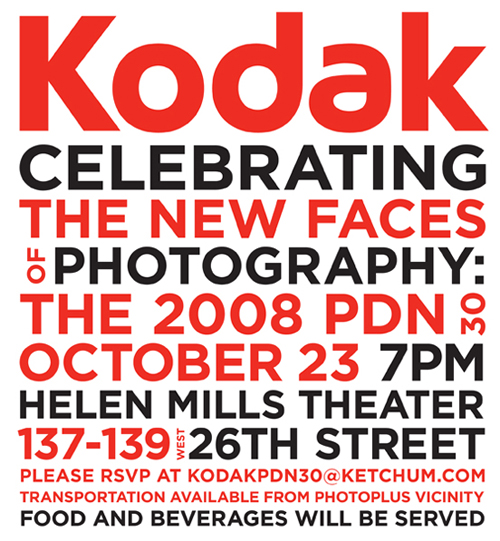[Insert text here on the state of the psyche-state with impetuses ranging from changing of seasons, the economy, voting, war, forsaking by G_d, the economy. Mix hopeful and rhetorically clever platitudes cloaked in flowery speak w/ laconic jabs of irony and maybe-it’s-a-conspiracy-half-joking-humor, mix should be approx 70 to 30…% that is. Note story of Slavic man who swam laps in the Atlantic Ocean at Coney Island on a cold cold day (ex-Russian special forces, possible if not likely). Connection: not sure, but have you ever? Highlight, the 2 fights at the grocery store the other day, which neared punches been thrown, involving all old people. On that note you can if you wish go into how reactionary people have been towards…no never mind, but do note the the group of guys who alluded to you getting stabbed (as in shived) if you took pictures. As for these scenarios, maybe suggest sublimation if you’re the aggressor, or remaining numinous if you’re on the receiving end. Touch on the changing of the leaves and the coming of a revolution, spiritual, political, whatever, (but don’t shy from a heavy-handed analogy there in regards to the possibility of being on the brink of something akin psychologically to the the landscape post apolocolypse (this fall seems feasible (or maybe it’s not (but still pretty sure that, yeah, it is)))). There could be some value in quoting some dark passage on Hell from Lowry’s, Under the Volcano or Gass‘, The Tunnel. (Praise Gass’ prose on par with Joyce, and a tonic that can get you stewed and through the hard nights that follow these sorts of hard days.) But do not, I repeat, do not, go on at length fondling this literary tangent, b/c nobody cares, nor furthermore do they think it has anything to do with pictures; you’ve concocted that construction entirely in your head. And as far as the, the pictures, try and say as little about them as possible.]
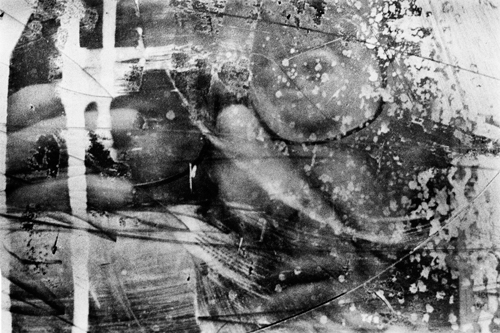
Photo: © Graeme Mitchell, 2008.
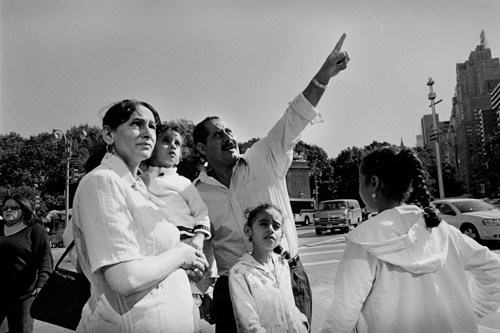
Photo: © Graeme Mitchell, 2008.
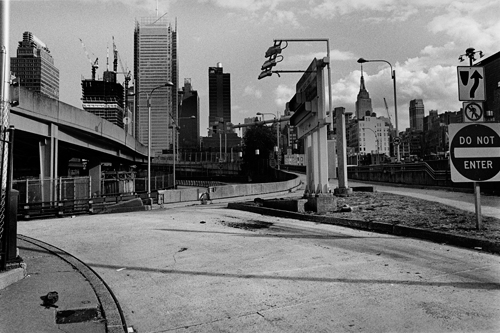
Photo: © Graeme Mitchell, 2008.
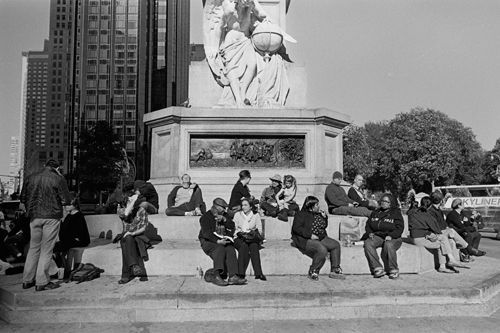
Photo: © Graeme Mitchell, 2008.
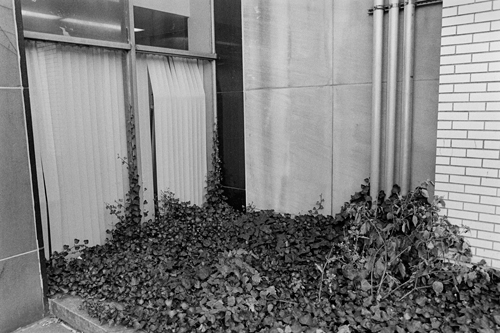
Photo: © Graeme Mitchell, 2008.
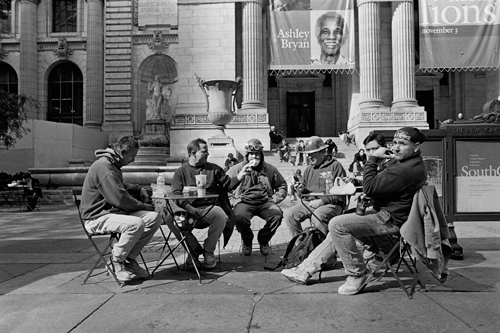
Photo: © Graeme Mitchell, 2008.

Photo: © Graeme Mitchell, 2008.
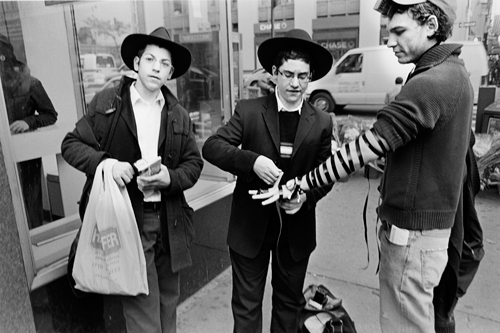
Photo: © Graeme Mitchell, 2008.

Photo: © Graeme Mitchell, 2008.
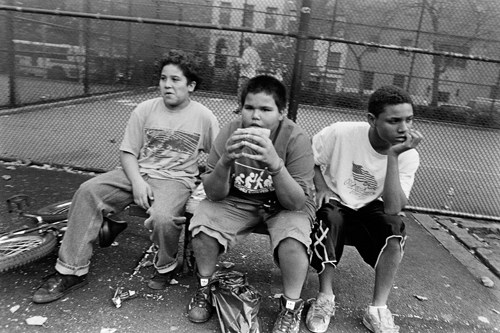
Photo: © Graeme Mitchell, 2008.
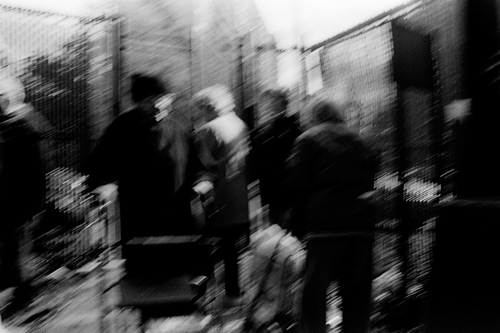
Photo: © Graeme Mitchell, 2008.
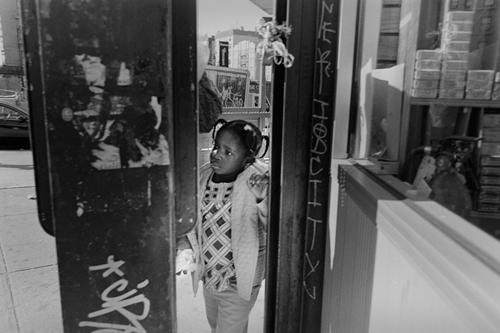
Photo: © Graeme Mitchell, 2008.
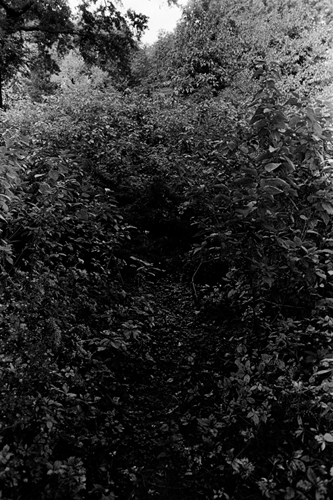
Photo: © Graeme Mitchell, 2008.
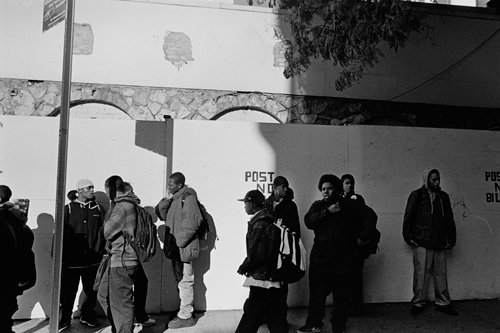
Photo: © Graeme Mitchell, 2008.
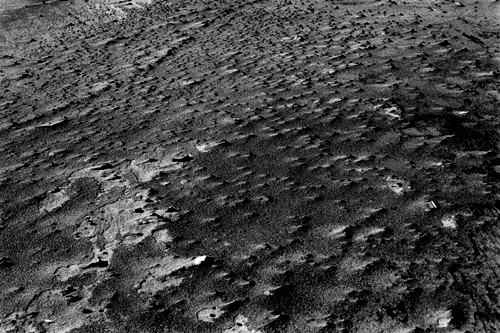
Photo: © Graeme Mitchell, 2008.
I read today that Goya‘s head was stolen when his body was being moved from France (his place of death) to Spain (where he spent most of his life). It was never retrieved. He was a remarkable artist, one that peered, no stared, right into the most deplorable haunts of himself and human-fate. (“Stare. Listen Eavesdrop. Die knowing something. You’re not hear long” -Walker Evans).
But Goya’s head…I don’t know why I’m bringing it up; maybe some might gloss over its missing as neat trivia, but I found it to be the sort of stuff odd dreams and fantastic tales are made of.

Painting: Saturn Devouring His Son, 1819. By Francisco Goya.
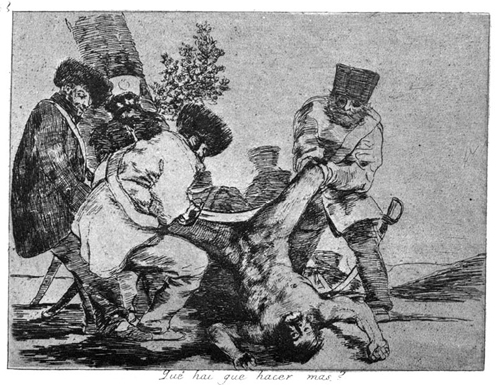
Print: What more can one do?, from The Disasters of War, 1812-15. By Francisco Goya.
To tie this into photography…well, Sorrenti has always drawn a lot of inspiration from the old masters, a lot of time in very literal interpretations or homages. He did a Goya inspired story years ago for Another Magazine.
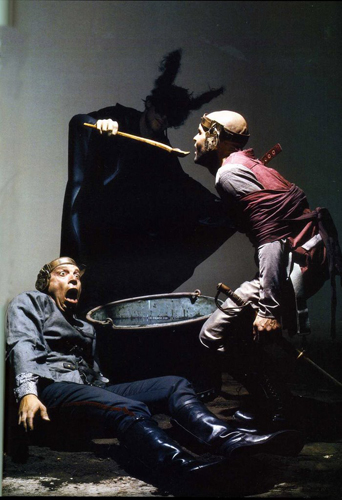
photo: “Silent Scream” in Another Magazine Fall/Winter 04. © Mario Sorrenti.
Or a more true reference to the spirit of Goya would be the most Classically alluding contemporary photographer, the prince of photo darkness, and the taker of heads himself: Joel-Peter Witkin.

photo: The Kiss (La Baiser), 1982. © Joel-Peter Witkin.
Randomly, an Aunt in Canada sent me this link that she’d heard of; it’s the collection of a man (Jamie Livingston) who took a Polaroid a day for 19 years, right up until the day he died. It’s a beautiful testament to photography and to keeping your eyes open in life.
See it, here. (And I suggest clicking on the new version where you can zoom and pan 5 year blocks at a time).

photo: screen shot from http://hughcrawford.addresszero.com/
Or for a nice review/summary on it you can go, here.
A number of probably lesser known Japanese photographers have caught my eye recently (i.e. not Sugimoto, Tomatsu, Kawada, Moriyama). Â Many of them, like those known, have aesthetic sensibilities fundamentally different from what’s traditionally come out of the West: where the Western tradition seems interested in the ordering of things, as though to make fictions and, well, proverbial storefronts out of our surroundings;Â the Japanese tradition seems inclined towards exploring the natures of chaos and minimalism (often in the same abstract breath) – and seeing these differences as a product of the literal landscapes our respective cultures inhabit is not a far stretch to make I think – but broad generalizations are just that, simple and sweeping and not worth much more than a starting point, so continue as you will to where you will.
It was Asako Narahashi’s series, half awake and half asleep in the water, that brought this train of thought to mind.

photo: Kawaguchiko, © Asako Narahashi.

photo: Jonanjima, © Asako Narahashi.
The water theme is nearly archetypal in Japanese photography, like Sugimoto’s seascapes, or Toshio Shibata’s studies of damns and water. Sugimoto’s are beautiful in an everyone-loves-them sorta way, but Shibata’s water photographs touch on something primordial, like you’ve accidentally stepped in on G_d half way through an act of creation:

photo: Grand Coulee Dam, Douglas Co., WA, 1996. © Toshio Shibata.

photo: Elkhead Reservoir, Mofat Co., CO, 2000 © Toshio Shibata.
And you saw it coming, but I can’t help it, how can we talk about this w/o Araki?
Flowers and knots you old boyscout you!
Not that that has anything to do with water…but I mention Araki b/c there still a sensibility there that’s ubiquitous between the Japanese photographers, and, yes, it’s something more than deep blacks. It’s something else born from that small island with thick cities…maybe I’ll mention many critics noting of the remnants of what WWII did to the collective (sub)conscious. I’ve no idea…postulations…b/c I’ve never been. Ever. But I bring it up to segue to these two images that I wanted to post that were done with the Rapatronic camera, which was the first camera to be able to record an exposure in the nanosecond range. It could fire one frame, and these are ones a millisecond after a nuclear detonation.

photo: nuclear detonation photographed with a Rapatronic camera

photo: nuclear detonation photographed with a Rapatronic camera
(How incredibly iniquitous these are does not elude me.)
I’m not sure if my memory servers me properly – it often doesn’t – but I think this is the first time I’ve mentioned a landscape photographer here; not that I thought it due time or anything like that, but I’m not able to pass Michael Lundgren‘s Transfiguration series (out by Radius books) w/o noting it.
At their best, and there are some doozies here, the photographs from this series take on a mythical feel, like peering into some archaic scene from a land far off where things are as simple as good and evil and where beings only stoners and/or fantasy nerds could think up live and breath, love and quarrel… That may seem tongue and cheek, but it’s not meant to be, not at all. Think, when was the last time you saw landscape photography that worked in the traditional vernacular (large format black and white), but which offered something completely different in terms of emotion than the white aspens in a grove?
Well, I think this is it. Lot of mystery here, a lot. Thanks for it, Michael.

photo: from Transfiguration series, © Michael Lundgren.

photo: from Transfiguration series, © Michael Lundgren.

photo: from Transfiguration series, © Michael Lundgren.
(That last one in particular really rattles my brain around, makes me think of something John Divola might see…)
Most likely you’re well aware of Yousuf Karsh and his work. It’s part of the canon no doubt, but still I’d never seen this portrait he did of Albert Schweitzer.  It left me speechless. Speechless.
This is what Karsh said was the conversation he had during the taking of this potrait: “‘Which,’ I asked this humanitarian and Nobel Peace Prize winner, ‘is the greatest of the Ten Commandments?’ ‘Christ gave only one commandment,’ replied Schweitzer, ‘and that was love.'”

photo: Albert Schweitzer, 1954. © The Estate of Yousuf Karsh.
Absolutely. Bloody. Remarkable.
The Schweitzer portrait is I think so fecund with poignancy for a number of reasons, one being that it’s so contemporary; if you showed it to me w/o any credits, I’d have guessed Nadav Kander shot it.

photo: Ian Mckellen I. © Nadav Kander.
Further evidence of of how seminal Karsh’s oeuvre has been in the medium can be seen elsewhere. For instance, take a look at the light Dan Winters has been exploring recently, especially in the actor series for New York Mags 40th anniversary issue.

photo: Robert DeNiro, for New York Magazine. © Dan Winters.
vs.

photo: Ernest Hemingway, 1957. © The Estate of Yousuf Karsh.
And I’ll also include what Karsh wrote on taking this portrait of Hemingway:
I expected to meet in the author a composite of the heroes of his novels. Instead, in 1957, at his home Finca VigÃa, near Havana, I found a man of peculiar gentleness, the shyest man I ever photographed – a man cruelly battered by life, but seemingly invincible. He was still suffering from the effects of a plane accident that occurred during his fourth safari to Africa. I had gone the evening before to La Floridita, Hemingway’s favorite bar,  to do my “homework†and sample his favorite concoction, the daiquiri. But one can be overprepared! When, at nine the next morning, Hemingway called from the kitchen, “What will you have to drink?†my reply was, I thought, letter-perfect: “Daiquiri, sir.†“Good God, Karsh,†Hemingway remonstrated, “at this hour of the day!â€
“Whosoever unceasingly strives upward…him we can save.” – Goethe.
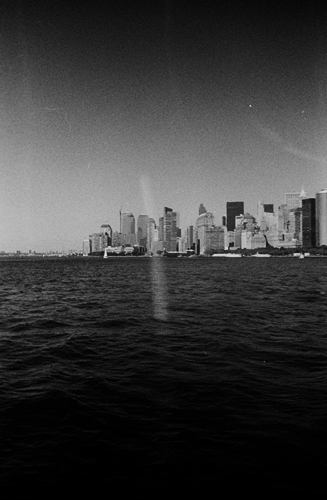
photo: © Graeme Mitchell, 2008.
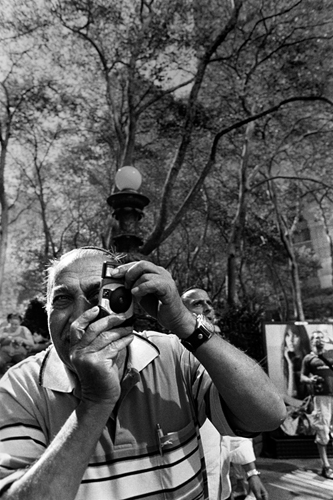
photo: © Graeme Mitchell, 2008.
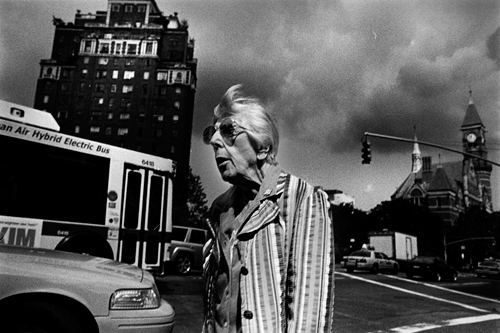
photo: © Graeme Mitchell, 2008.
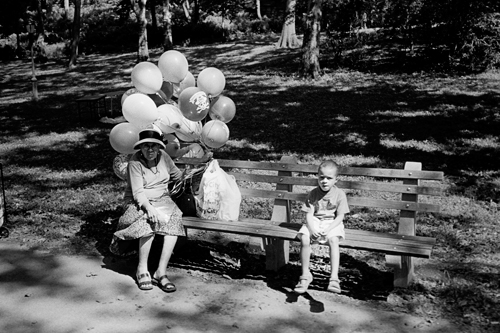
photo: © Graeme Mitchell, 2008.
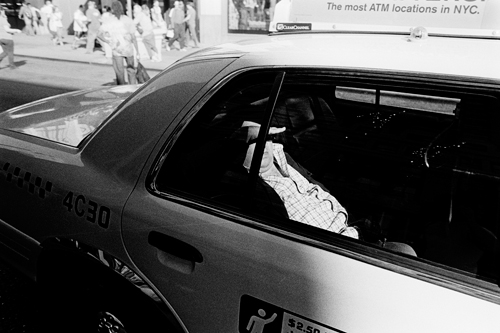
photo: © Graeme Mitchell, 2008.
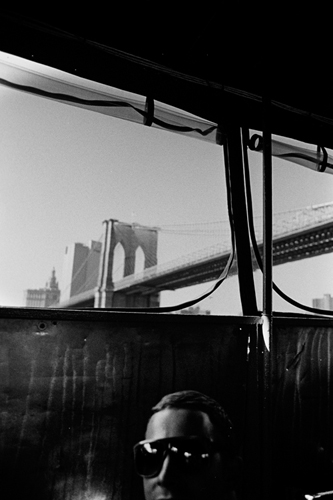
photo: © Graeme Mitchell, 2008.

photo: © Graeme Mitchell, 2008.
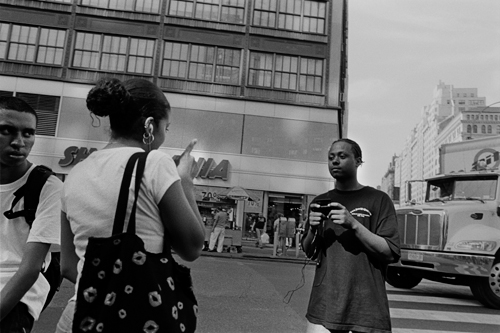
photo: © Graeme Mitchell, 2008.
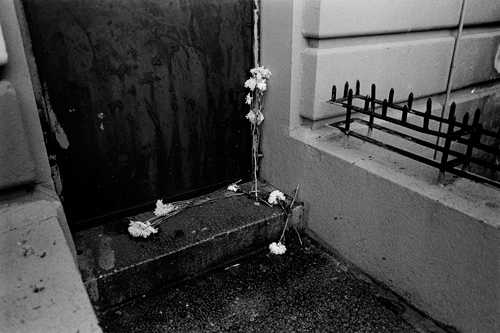
photo: © Graeme Mitchell, 2008.

photo: © Graeme Mitchell, 2008.
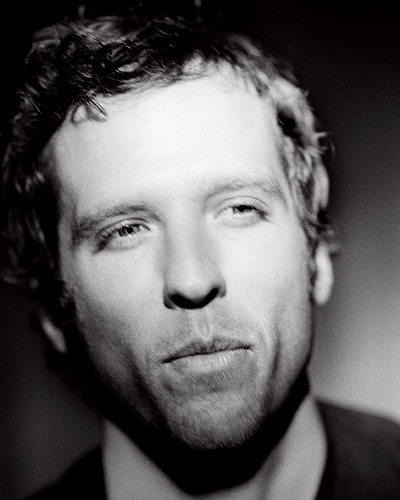
photo: Garett Stenson, Sept 2008. © Graeme Mitchell.
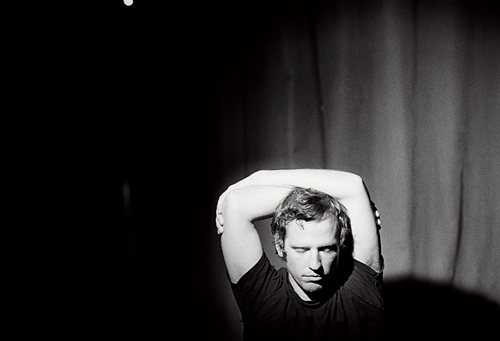
photo: Garett Stenson, Sept 2008. © Graeme Mitchell.
Thought I’d offer this up, b/c I’ll have a picture hanging there.
Painter, Alex Steckly, who you’ll be able to catch at the Dietch Gallery in Art Basil Miami come December.

photo: Alex Steckly, at his studio, Sept 2008. © Graeme Mitchell.

photo: Alex Steckly, at his studio, Sept 2008. © Graeme Mitchell.

photo: Alex Steckly, at his studio, Sept 2008. © Graeme Mitchell.

photo: Alex Steckly, at his studio, Sept 2008. © Graeme Mitchell.
They were dubbed by my siblings and I as “The Dukes” (Mother) and “The King” (Father). When and why the names were adopted I can’t remember anymore, but it seems fitting. Fitting here b/c they are the two most difficult subjects for me to photograph (hitherto). It is not b/c of tortured baggage – I would not pretend anything that compelling – but it is b/c with ones parents there is something fundamental and unaffected, and something also myriad and unutterable. They’re our kings and queens, our cardinal gateway. Naturally one’s ideas or proclivities are not bowed to by one’s king or queen. Generally it’s the other way around. I’m sure you can understand what I’m getting at, how a Duke and a King aren’t easy subjects.

photo: Maureen Mitchell, Canby, OR., Sept 2008. © Graeme Mitchell.
I was taking these immediately after looking through some photo albums with my mom, snaps from child-hood of us in gondolas, of us petting odd animals, of us dressed up. Upon realizing my early childhood is at best scattered, illusive fragments as far as my memory goes, I commented to my mom, it’s amazing how little we remember, you know, how forgetting it so natural… She offered in response (with not a trace of irony), that’s a good thing.
Dark, Dukes, for God’s sake, dark.

photo: David Mitchell, Canby, OR., Sept 2008. © Graeme Mitchell.
Also, a poem the author, Haven Kimmel had sent me:
OCEANS
I have a feeling that my boat
has struck, down there in the depths,
against a great thing.
And nothing happens!
Nothing . . . Silence . . . Waves. . . .
--Nothing happens? Or has everything happened,
and we are standing now, quietly, in the new life?
Juan Ramon Jimenez
tr. Robert Bly
Which for some reason I think makes sense perfectly here.
While away for work over the last few weeks I crashed with my close friend, Benjamin, on his couch to be precise, b/c there’s hotel rooms in life and there’s friends in life – and I choose the later. For work Benjamin is a web director/strategist (i.e. he uses the internet to make people $). While staying with him, he and I worked together on his new resume/portfolio. I’m mentioning this for two reasons: first, simply to help get the word out that he’s on the professional market, so to speak; secondly, and moreover, I bring it up b/c of the strong, dare I say ingenious, use of photography on his site: the utilization of mainstream-culture’s web disseminated imagery (i.e. our generation’s visual idioms) as the backdrop for his portfolio is progressive. Not progressive like walking to work, not progressive in a clever manner, but progressive in a critical and thoughtful manner that at at the same time gets in your face as it sneaks up behind you. Furthermore, it’s not often to see a site that’s not photography related at all yet hinges on the very medium. Benjamin is resituating these images, rewriting them into completely different texts than they were initially intended, and in doing so he speaks much louder and clearer than any amount of copy could.
The people who get it, are really going to get it, and in doing so are going to get the author in a big way.
Smart work, friend.
Check it, here.
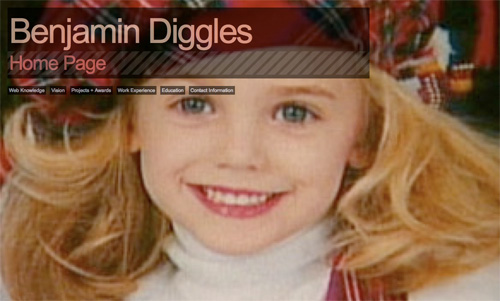
Photo: screenshot from www.benjamindiggles.com

Photo: screenshot from www.benjamindiggles.com
Mario Sorrenti (w/ Art Partner) is one of those quickly-becoming-old-gaurd shooters that I’ve always respected but who’s work I’ve personally never enthusiastically anticipated. Lately, though, he’s been doing some sick-o stuff that I think is a departure from not only his usual fare but from the ubiquitous NYC diet of seamless and softboxes. The deconstruction and vintage sci-fi-film-feel here makes me think of buying a digital camera. Props, Mario. Love that you’re still pushing it.
Pics from Japanese Vogue Sept ’08 and Vogue Hommes International Fall/Winter ’08, respectively.

photo: Vogue Japan, Sept 08, © Mario Sorrenti.
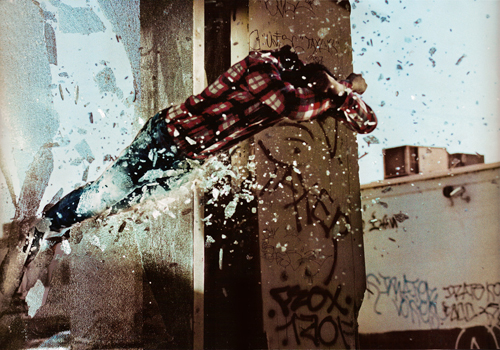
photo: Vogue Hommes International, Fall/Winter 08, © Mario Sorrenti.
Flying back to NYC tomorrow, heaps of work and need-to-dos, but I’ll get back to the ol’interweb-postin’ too. Did see this portrait by Amelia Handscomb of the Flight of the Concords duo on the cover of issue #91 of BPM magazine…caught my attention. It’s always a pleasure to be taken by quality in random places; in that, I’ve never looked at BPM magazine until this, and it immediatly reinforced for me the importance of good photography, or even more generally to extrapolate on that line of thought: that doing things well matters.

photo: BPM #91 cover, © Amelie Handscomb.


